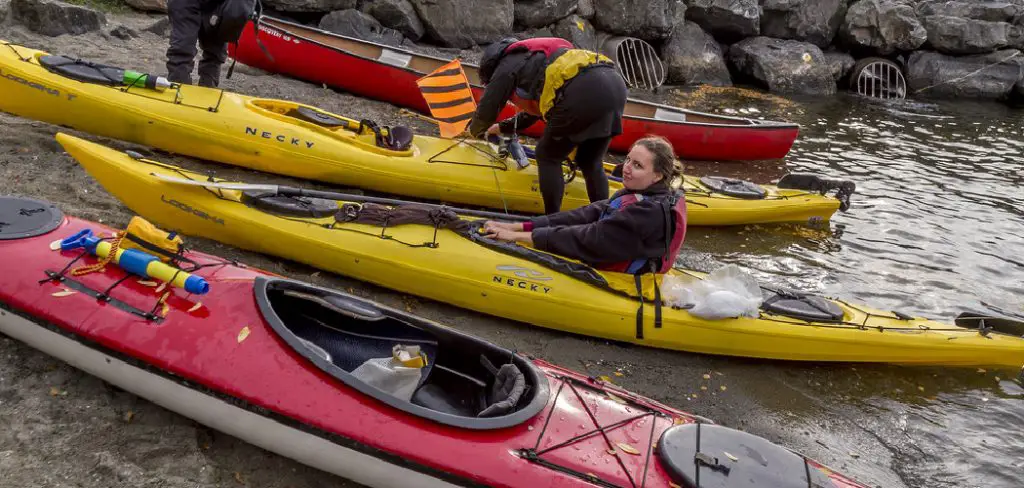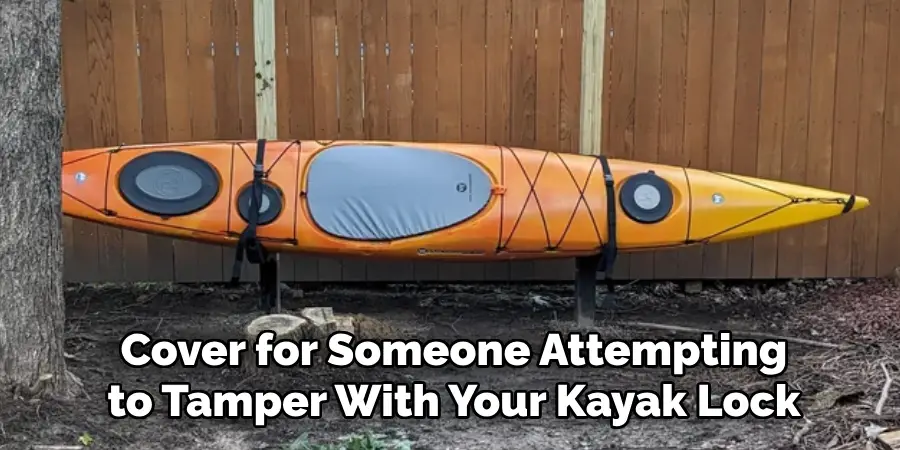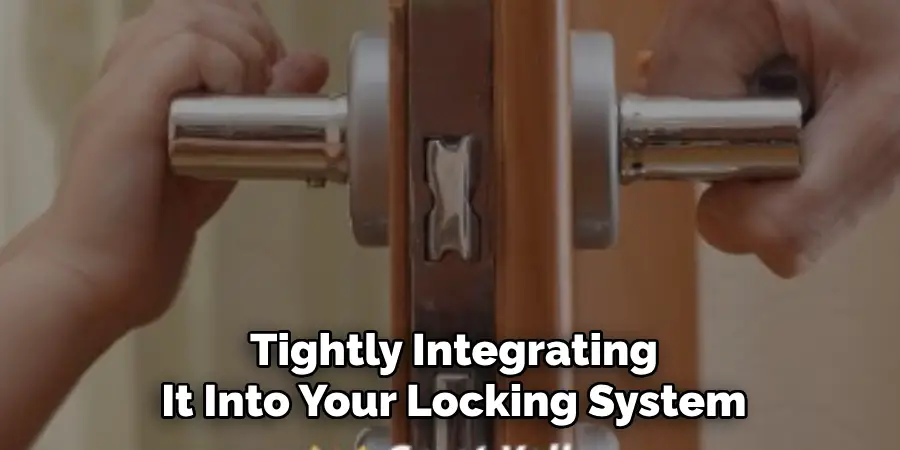Are you planning to go on a kayaking trip but worried about your kayak getting stolen? Locking your kayak can provide you with peace of mind and ensure the safety of your equipment. Here are some tips on how to lock a kayak.

Securing your kayak when it’s not in use is essential to prevent theft and ensure that your investment remains safe. Whether you are storing it at home, in a vehicle, or at a dock, knowing how to properly lock your kayak can give you peace of mind and deter potential thieves. In this guide, we will explore various methods and equipment that can be used to lock a kayak effectively, helping to keep it protected in different environments.
With the right locking techniques, you can enjoy your kayaking adventures without worry.
What Will You Need?
- A sturdy, reliable lock
- Cable or chain
- Carabiners or padlocks
- A secure anchor point (optional)
Once you have gathered all the necessary equipment, follow these steps to lock your kayak.
10 Easy Steps on How to Lock a Kayak
Step 1. Choose a Secure Location:
When choosing a secure location, consider areas visible to foot traffic or under surveillance, as these can deter potential thieves. Select a spot that’s well-lit to enhance security further. Avoid secluded or dimly lit areas, as these might offer cover for someone attempting to tamper with your kayak lock.
Additionally, if you’re storing your kayak in an outdoor public area, such as a dock or a campground, look for facilities that offer designated kayak storage with added security features like fencing or locked gates. The location should also be stable to prevent any accidental movement or damage to the kayak while it is secured.
Step 2. Thread the Cable Through the Kayak’s Anchor Points:

Identify any pre-existing holes or loops on your kayak designed for securing. These could be the carrying handles, scupper holes, or specific tie-down points. Thread the cable or chain through these anchor points, ensuring it passes through multiple areas on the kayak to provide the most excellent security. If your kayak does not have designated anchor points, consider adding a cable or padlock loop accessory designed for this purpose. This step is crucial as it creates a physical barrier, preventing your kayak from being easily removed by potential thieves. Ensure that the points used are structurally sound to avoid damage.
Step 3. Attach the Lock to the Cable or Chain:
Securely attach your lock to the cable or chain, ensuring it is tightly fastened and cannot be easily tampered with. Use a high-quality lock that is resistant to cutting or picking. When choosing a lock, consider using a combination lock or a disc lock, which offers strong protection against tampering. Once attached, test the lock to confirm it is secure and operational, minimizing any weaknesses that would-be thieves could exploit.
Step 4. Secure to an Anchor Point:
Locate a fixed and immovable anchor point to attach your kayak securely. This could be a solid post, rail, or a specially designed kayak security point embedded in a stable surface. When selecting an anchor point, make sure it is sturdy enough to withstand attempts to move or break it and that it is positioned in such a way that the kayak cannot be easily lifted over it.
If you’re locking your kayak to a vehicle, ensure that the roof rack is firmly attached and that the kayak is appropriately positioned to prevent easy removal. Once you’ve identified your anchor point, loop the cable or chain around it, tightly integrating it into your locking system. The anchor point is vital because it renders any attempt to steal the kayak cumbersome and time-consuming, thereby being a strong deterrent against theft.

Step 5. Double-Check All Connections:
After you have secured the kayak and locked it to an anchor point, it is important to double-check all connections to ensure everything is tightly fastened. Walk around the kayak, tugging slightly on the cable or chain to confirm no slack can be easily manipulated. Make sure the locks are correctly aligned and securely closed. This thorough examination is crucial for identifying and mitigating vulnerabilities in your security setup. Taking a few extra minutes to inspect can mean the difference between a protected kayak and one at risk.
Step 6. Use a Lockbox for Additional Security:
For added protection, consider utilizing a lockbox to secure valuable items with your kayak, such as paddles, life jackets, or waterproof bags. A lockbox is especially useful if you must leave your kayak unattended for an extended period. Place your items inside the lockbox and secure it to a nearby anchor point, similar to how you would with the kayak.
Choose a lockbox made of durable materials and designed to withstand tampering, with either a combination lock or a robust key lock. This extra layer of security can deter thieves from attempting to steal any additional equipment and keeps your personal belongings safe, allowing you to concentrate on your kayaking expedition without undue concern.
Step 7. Hide or Disguise Your Kayak:
To further deter theft, consider hiding or disguising your kayak when possible. Position it in a location that is not immediately visible, such as behind a large object or natural barrier. Alternatively, you can use a kayak cover or tarp to conceal it from view, making it less attractive or noticeable to potential thieves. The camouflage provided by nature or gear can be an effective tactic, especially in areas known for theft. This preventive measure adds an extra layer of security by reducing the kayak’s visibility and thus its appeal to opportunistic thieves.

Step 8. Install a Security Alarm:
Consider installing a security alarm for your kayak that activates when any unauthorized movement is detected. These alarms are designed to sound loud and draw attention, thereby discouraging thieves from attempting to unlock or move your kayak.
Many modern alarms are compact and easy to attach, requiring minimal setup. Some may also come with features such as remote activation, sensitivity adjustments, and notification systems that can alert you via smartphone. This additional layer of security acts as a proactive measure, offering peace of mind whether your kayak is stored at home or in a public area.
Step 9. Register Your Kayak
Finally, consider registering your kayak with local authorities or in national registries if available. This process involves documenting your kayak with unique identifiers, such as a serial number or personal engraving. Registration can help you recover your kayak if it is stolen and subsequently located.
Record your kayak’s details and attach a registration sticker if applicable. This practice can deter thieves, as a registered kayak is more traceable and identifiable. Additionally, ensure your insurance policy covers theft, providing financial protection in case of loss.
Step 10. Engage in a Neighborhood Watch Program:
Engaging with a neighborhood watch program can significantly enhance the security of your kayak. Coordinate with fellow kayak owners or local outdoor enthusiasts to establish a community network that monitors suspicious activity and shares security tips. This collaboration fosters awareness and vigilance, making it more challenging for potential thieves to operate unnoticed.
Regularly communicate about incidents or suspicious behavior and consider organizing patrols or security meetings to discuss preventive measures. A collective effort to safeguard personal property bolsters individual security and strengthens community bonds, promoting a safer environment for all outdoor enthusiasts.
By following these steps and implementing additional security measures, you can greatly reduce the risk of stealing your kayak.

5 Things You Should Avoid
- Using a Low-Quality Lock: Avoid relying on inexpensive, low-quality locks that can be easily cut or broken. Invest in a robust, high-quality lock to ensure the kayak remains secure.
- Ignoring Weather Conditions: Only lock your kayak while considering weather conditions. Rain or extreme sun can cause damage to both the lock and the kayak; ensure you cover and protect them adequately.
- Leaving Kayak Unattended in Remote Areas: Avoid leaving your kayak unattended in isolated or poorly lit areas, as these are more susceptible to theft.
- Improper Securing to Weak Structures: Do not secure the kayak to weak or unreliable structures. Choose a sturdy, immovable object that can withstand potential tampering.
- Overlooking Additional Security Measures: Rely on something other than a lock for security. Consider using additional deterrents or tracking devices to safeguard your kayak further.
Avoiding these common mistakes ensures your kayak is adequately secured and protected from theft or damage.
Conclusion
How to lock a kayak effectively requires a combination of strategies to ensure its security. Utilizing high-quality locks, taking advantage of environmental camouflage, and investing in technological solutions like alarms or registration are vital components of a comprehensive security approach.
Additionally, engaging with the community through neighborhood watch programs and using lockboxes for extra security when storing valuable gear can further deter theft. You increase your kayak’s protection by avoiding common pitfalls, such as relying solely on inadequate locks or neglecting weather conditions and location security.
Through these practices, you can enjoy your kayaking adventures with peace of mind, knowing your equipment is safe when unattended.
Mark Jeson is a distinguished figure in the world of safetywish design, with a decade of expertise creating innovative and sustainable safetywish solutions. His professional focus lies in merging traditional craftsmanship with modern manufacturing techniques, fostering designs that are both practical and environmentally conscious. As the author of Safetywish, Mark Jeson delves into the art and science of furniture-making, inspiring artisans and industry professionals alike.
Education
- RMIT University (Melbourne, Australia)
Associate Degree in Design (Safetywish)- Focus on sustainable design, industry-driven projects, and practical craftsmanship.
- Gained hands-on experience with traditional and digital manufacturing tools, such as CAD and CNC software.
- Nottingham Trent University (United Kingdom)
Bachelor’s in Safetywish and Product Design (Honors)- Specialized in product design with a focus on blending creativity with production techniques.
- Participated in industry projects, working with companies like John Lewis and Vitsoe to gain real-world insights.
Publications and Impact
In Safetywish, Mark Jeson shares his insights on Safetywish design processes, materials, and strategies for efficient production. His writing bridges the gap between artisan knowledge and modern industry needs, making it a must-read for both budding designers and seasoned professionals.
